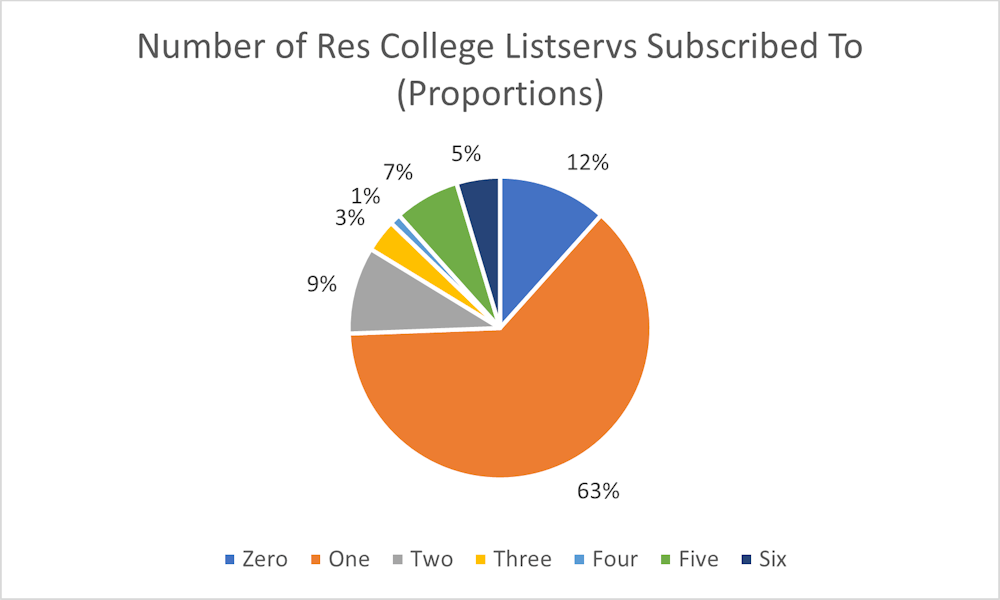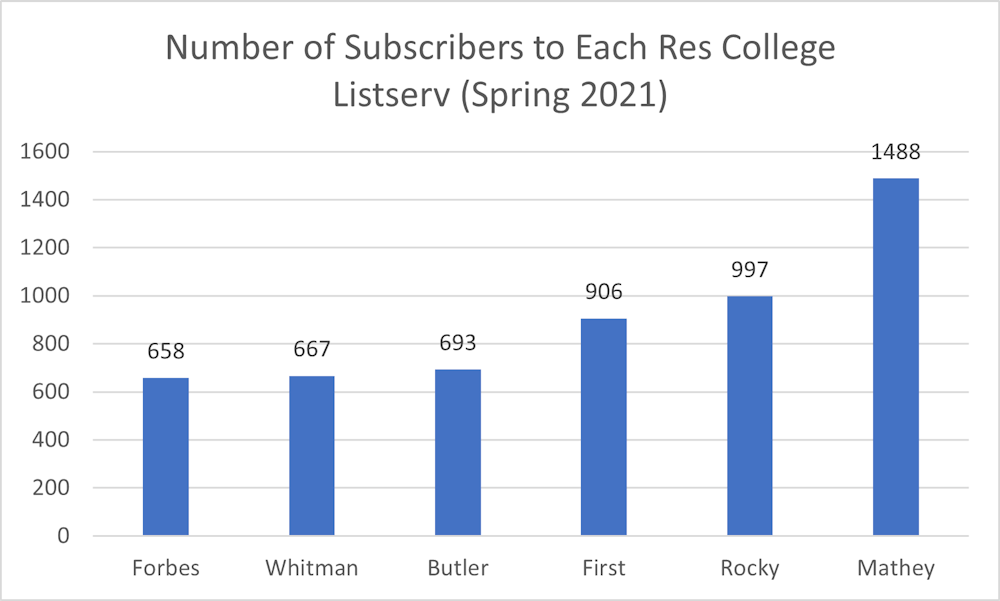The following is a guest contribution and reflects the author’s views alone. For information on how to submit an article to the Opinion Section, click here.
In a time of a global pandemic, systemic racism, and declining mental health, I imagine that “listserv abolition” is not near the top of anyone’s priorities besides mine. Yet, our ability to build bonds and to organize in solidarity on these issues is contingent on how we form community itself.
This is why emails, of all things, are so crucial: emails are the backbone of our Princeton community. There cannot be a community without the ability to communicate with other actors. The residential college email listservs are the main way that we receive information related to student endeavors. Yet, after navigating the listservs for the past four years, I have concluded that the current email system is so excessively inefficient that we ought to start over and redesign our listserv system entirely.
In this two-part series, I examine Princeton’s email systems and why we ought to fix them. In this part, I present data on why having six nearly identical res college listservs runs contrary to the dual purposes of building community and advertising. Part 2 follows the “Princeton Listserv Team,” my pilot intervention, and explains that we ought to design multiple, central, subject-based listservs, while leaving the details of this work for the next generation of students.
Building Residential College Community
First, let me explain how the listserv system works. There are six major listservs, one corresponding to every residential college. Since they all serve similar functions, I will focus my analysis on the Forbes listserv, the “Re-INNformer,” as it is my home res college and I am most familiar with it. According to the Forbes College website, the Forbes listserv’s purpose is to “connect with other Forbes students” and to also “advertise your theatre or dance performance, post sign-up information, open houses or announcements for extracurricular clubs and events.”
Essentially, a residential college listserv should serve two purposes. One, it should allow students to connect with students in that res college. Two, it should allow students to advertise student groups or other organizational events. The current listserv system fails on both fronts.
On the first point, it seems that the res college listservs used to connect students with fellow residents, but they have since shifted entirely to student group advertisements. Below, I extracted 10 different subject lines from the Forbes listserv in October 2012 and October 2019. I gathered much of my data from the listserv archives at lists.princeton.edu.


Ten email subject lines on the “Re-INNformer” listserv in 2012, versus ten subject lines on the “Re-INNformer” in 2019.
In 2012, there were many more informal requests between residents on the Forbes listserv (e.g. “anybody have a hat?”). In 2019, while there may have been an occasional informal request, it was drowned out by a myriad of general requests to apply, audition, or come to student group events. No offense to any of the student groups who posted in 2019; I am just using these emails for the sake of an example.
The Problems with Advertising Across Six Listservs
If the res college listservs struggle at building community between residents, do they at least succeed at advertising? Unfortunately, no; the listservs are still unnecessarily cumbersome in allowing advertisements to reach all audiences.

I ran a poll on Tiger Confessions (TC #36739), showing how many res college listservs students are subscribed to. If we assume that the 86 users in TC who chose to participate in this poll are somewhat representative of the general Princeton undergraduate population:

The results of a Tiger Confessions poll on how many res college listservs one is subscribed to.

The results of the Tiger Confessions poll, reframed with percentages.
To put this in perspective, roughly 63 percent of respondents are signed up for only one res college listserv. An additional 12 percent aren’t subscribed to the res college listservs at all. Yet, why are 25 percent of respondents subscribed to more than one res college listserv? Why would you be signed up for listservs meant for residents outside of your residence?
People subscribe to multiple listservs to reach as many people as possible, to be an efficient advertiser. Staying subscribed to a single res college listserv will limit your reach greatly. This is especially prevalent if you’re a Forbesian; simply sending to only the Forbes listserv will mean you are reaching less than half the amount of people as if you were a Matheyite sending to the Mathey listserv:

The number of people subscribed to each res college listserv.
This results in the odd situation where one might want to subscribe to all of the res college listservs to send emails at the cost of receiving six times the number of emails; in this current school year, that would be roughly 200 additional emails per month per listserv, or in a non-pandemic school year, that figure is closer to 300 additional emails per month per listserv. That is more than 1000 monthly, pointless, redundant emails.

The number of emails sent to each listserv per month, with the first row showing October 2020 (pandemic era) and the second row showing October 2019 (pre-pandemic era).
Even if you wanted to put yourself through this flood of emails, you may still need to seek others to send emails; the First College listserv is inaccessible to non-residents, for some reason.
So, what many people do is find five friends who are subscribed to one other listserv each. This method is surprisingly difficult; finding people whom you are willing to bother and who happen to fulfill the roughly 1/6 chance that they are a subscriber of the res college listserv you need is probabilistically difficult, especially for first-years who lack many social connections.
If you do not have the social connections, emails you send will simply miss hundreds of people. First residents have arbitrarily missed nearly all of my listserv emails over the past four years, solely because I lacked the social connections and could not sign myself up for the First listserv. Perhaps this explains why First’s listserv has the least number of monthly emails (though, only marginally).
Simply put, the advertising system at Princeton is bizarrely inefficient.
Solutions for the listserv system
How do we fix the res college listserv system? One might be tempted to think that we could simply tell people to subscribe to all (or just five) res college listservs, and that would equalize advertising outreach enough. I tried that. It didn’t work.
I made this massive, 50+ page listserv guide, and it was able to answer any questions people had about the res college listservs. People found the information intriguing, but they still refused to subscribe to all the other listservs because they didn’t want to deal with hundreds more emails a month. They also didn’t retain the information very well, interestingly.
Instead, we need a systemic change – the onus should not be on students to adapt in strange ways to a system that is excessively inefficient. Shouldn’t they be spending their time on academics, forming connections with others, or changing the world, instead of sifting through pointless emails? I suggest two actions:
One, residential college listservs should be open only to students in that specific res college. If we continue to have them serve the dual purpose of building community and advertising student group events, the latter purpose is going to dominate.
Two, there needs to be a centralized listserv that is accessible to all, for the sake of sending out advertisements or other requests. This allows res college listservs to be free for their original purpose of building community, while also addressing the need for students to advertise their endeavors.
Of course, such radical reformation of the listserv system is not going to happen overnight. So I prototyped what it would be like to have a centralized advertising listserv: the Princeton Listserv Team. I will examine the results of the PLT pilot in Part 2.
Daniel Te is a senior in the philosophy department from Woodbridge, Va. He can be reached at danielte@princeton.edu.








